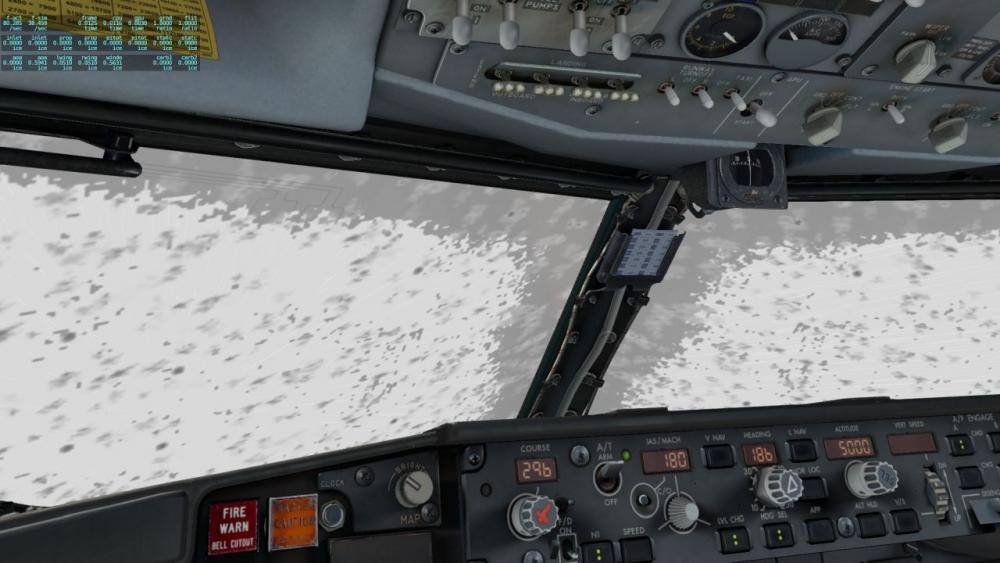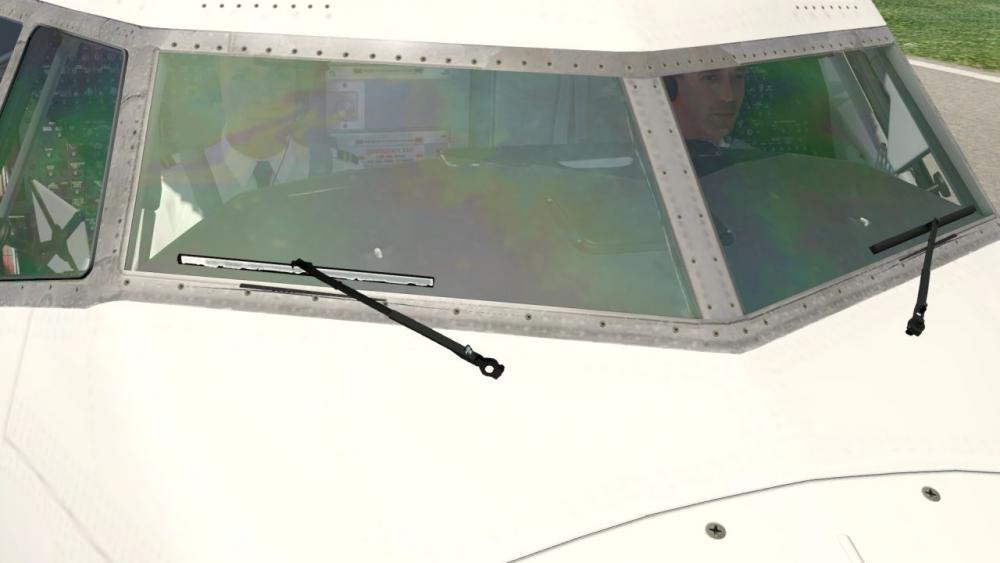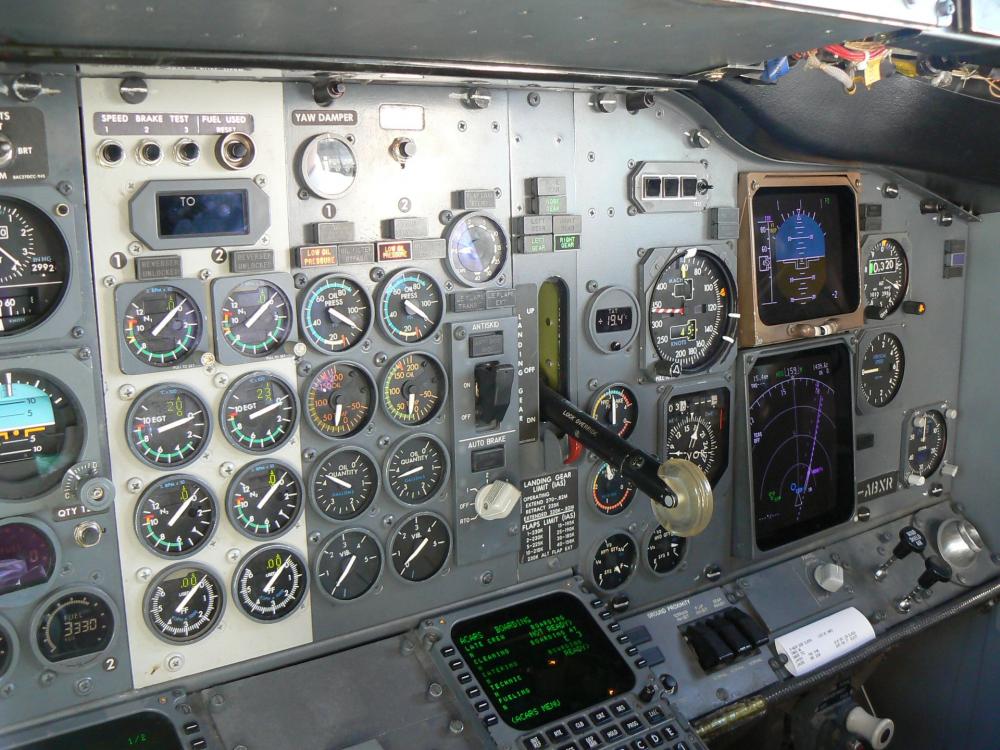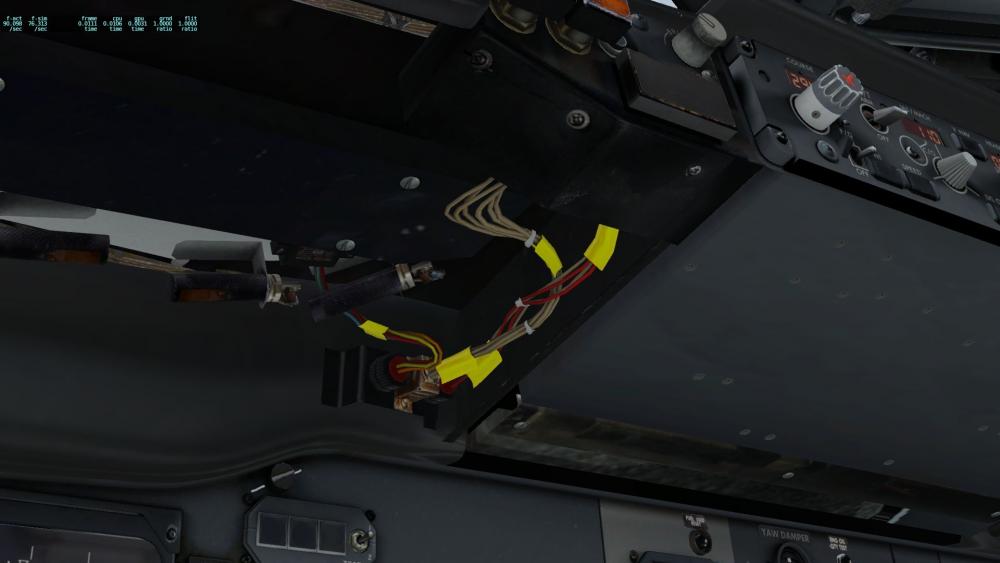-
Posts
5,694 -
Joined
-
Last visited
-
Days Won
416
Content Type
Profiles
Forums
Latest X-Plane & Community News
Events
Downloads
Store
Everything posted by Litjan
-

No key bindings for AP and AT disconnect in Xplane for IXEG B733
Litjan replied to Guziec's topic in Hardware/Cockpit Dev
Glad you got it to work - sorry for the long response time, I had to fly a (real) simulator checkride the last two days and wasn´t on station as much as I usually am. Let me know if anything else crops up, Cheers, Jan -

No key bindings for AP and AT disconnect in Xplane for IXEG B733
Litjan replied to Guziec's topic in Hardware/Cockpit Dev
Hi Chris, this does work, of course - the commands to map are ixeg/733/autopilot/AP_disengage and ixeg/733/autopilot/AT_disengage. The trimming works fine because we use the "default X-Plane" commands for that. I do not know why you don´t see the ixeg commands in your command list - I also use a Thrustmaster HOTAS setup and it works fine for me (and everyone else). You may have to have the IXEG running while trying to bind those commands (as they are supplied by the plugin), maybe that is the problem? Let me know if this works? Cheers, Jan -

Pitch oscillations whilst using VNAV descent?
Litjan replied to dipperdolphin's topic in Bug Reports
Hi Dipperdolphin, I am not quite sure what you are seeing - keep in mind that the VNAV descent path is still not working reliably in all situations - it is one of the parts that is only working under certain circumstances. Here is a complete list of what is still "under construction" as of now: https://forums.x-pilot.com/forums/topic/8526-things-that-are-not-going-to-be-in-v133/ I did not see our aircraft "oscillate" while on the path, though (it is either working quite well or totally off the beaten path ) - a slight variation of rate of descent would be quite normal, though, to adhere to the calculated geometric path. There is also other functionality where the plane will add bursts of power in case of higher than calculated headwinds, etc. If you want to post a video of what you are seeing, I might be able to diagnose it better. Cheers, Jan -
Hi Mizra, your observation is correct, we did not model the elevator column trim cutout - I have it on my list of things I would like to add...nothing is ever perfect . Thanks for your nice words, Jan
-
Well, this would be up to the user - I can offer a command to map for the GRD CALL - then the user has to map that to a button and also map the same button to the "Request pushback" command. This would be a "dual mapping" which is normally not a good idea, but I think it would work in this case. One can try if it works by taking one of the commands that are already implemented, maybe (ixeg/733/...) Cheers, Jan
-
Hmm, I could make a command for the grd call button so that you can map it to a joystick button - then you can map the same joystick button to a better pushback command (if they have one)... Cheers, Jan
-
Hi guys, yes, this is a known bug - it is caused by a computational issue with the gizmo code and will be fixed with the next gizmo version. For now just use the APU to power both buses - or accept the left bus being offline, it does not power any critical systems that you would need during turnaround (some fuel pumps, etc.) The default view is not lined up with the yoke because it is adjusted to give you best visibility of as much of the instrument panel as possible. If you prefer it to be lined up differently you can either (easy) set a new position in X-Plane and save it to "custom view" (CTRL-Numpad) or you can adjust the viewpoint in planemaker. I take the liberty to provide this link to the "bug reports" section, where exactly this issue was already discussed: https://forums.x-pilot.com/forums/topic/19423-elec-bus-issue-after-shutdown/ Cheers, Jan
-
Hi Mike, we do share that feeling! The years on the 737 were the best in my airline career, flying the 747-400 was nice...but you rarely ever flew it. Maybe from OM to touchdown . They sent me on to the A320 in 2012 and I still miss my 737 every time I fly with a FAC or SEC... Please keep the feedback coming, we are currently in the big "VNAV rewrite" - it is a complex beast and the initial attempt (as you found out), fell short of the target. Our last big push fixed a lot of problems with the lateral procedures, especially with entering and amending them...and we feel we have reached a fairly stable state with those. To get there with VNAV is our declared goal. Cheers, Jan
-
Hi Mike, About your observations - first, those are very welcome. I have flown the 737 for 10 years, but only the "Classic" variants. I stopped in 2012 (after being CPT for 4 years on it), and we modeled our aircraft after the variants I flew back then - so they aren´t incorporating any newer enhancements, updates to the FMC version or other airline options. The horizontal flight-director bar was modeled after videos I took of ours during the takeoff run. It stays on the bottom of the EADI until about 80kts or so - then move up swiftly to 15 degrees - you are obviously not supposed to follow them at this time, only after liftoff will they give valid guidance to stay at V2+15 (adjusted for any subsequent speed changes within a certain range). The VNAV options for descent are not fleshed out yet - we are still working on it. What kind of "works" is an unencumbered descent with no horizontal restrictions, anything else will likely not work and I encourage to use more basic modes along with "old fashioned descent planning" to manage your descents. Here are some links to what to expect from version 1.33: https://forums.x-pilot.com/forums/topic/8526-things-that-are-not-going-to-be-in-v133/ https://forums.x-pilot.com/forums/topic/17981-version-133-known-bugs-and-workarounds/ Cheers, Jan
-
That is weird - it should only have an effect on the way the autopilot behaves in the IXEG 737. Make sure you don´t change the joystick setting in the default X-Plane joystick menu - only in the IXEG preferences menu that comes up when you bump your mouse on the left side of the screen.
-
Right where I wrote it is. (The slider is called "Joystick CWS deadzone" and it is in the "Miscelleanous" field of the Preferences). Cheers, Jan
-
Hi - most likely due to your joystick sending input in the pitch or roll axis. Try to increase the "dead zone" for the joystick in the IXEG (left side pop-out) preferences menu. Just like in the real aircraft, the autopilot will disconnect (or not even engage) if the pilot moves the yoke. Sometimes older joysticks are also sending "spikes", erroneous signals, once in a while that can cause this. Increasing the null zone in the IXEG menu can make the autopilot more tolerant for this. Cheers, Jan
-
Hmm, I don´t know what tricks Nils did back then with the ice collecting under the wiper...I honestly don´t remember having that, but it could be some shader trick that does not work anymore with XP11. I just doublechecked and the "right wiper icing" is actually a visual artifact of something that went wrong with the wiper geometry. I always see it, even in sunshine and +20C. If you look really close you can see that the hinge of the right wiper is twisted by 90 degrees...I filed a bug. The only visual icing effect I am able to get is windshield icing over if I turn off the window heat (only the leftmost switch actually has an effect on the windshield icing). Definitely some room for improvement here for XP12... Cheers, Jan
-
You set those up just like any other X-Plane command. Go to the Joystick setup, then when you set up the function (command) for a button, search for "ixeg" and you can see all the "special" commands we supply for our aircraft. Some things (like the TOGA buttons or thrust reverser etc.) are working with the default X-Plane commands, other things (like most of the autopilot functions) are working with special commands (with the ixeg/733/... syntax). Cheers, Jan
-
Hi again, I know there are a lot of liveries out there for this aircraft - some of them really dirty, no doubt ;-). Just google "IXEG liveries" and you should find a lot! Cheers, Jan
-
Hi, you want to map the default X-Plane command "Engage TOGA power." (sim/engines/TOGA_power) to a joystick button and also the custom ixeg command "Disengage AP" (ixeg/733/autopilot/AP_disengage). You need to push this button a second time to silence the wailer and light that warns you about the autopilot disconnecting. Cheers, Jan
-

Couple of oddities after reinstalling 733
Litjan replied to martinlest's topic in 737-300 Aircraft Systems and Operation
The "wires" are just the way they are in the real aircraft, too - here is a pic and another one from my installation of the IXEG. It is likely that you now "see" the wires because you (finally!!) downloaded the latest version of the aircraft and I have moved the "default view position" slightly down. The "inop" for the logo lights is due to selecting the "winglet" option. With winglets installed the logo lights are covered and can therefore not be used. Cheers, Jan -

Lateral instability in IXEG 733
Litjan replied to martinlest's topic in 737-300 Aircraft Systems and Operation
Ha, I am indeed very relieved that you found the problem! I know nothing about joystick preferance files, but I am really happy that you got it to work. Now holding my fingers crossed for your success to hold steady for the next days, weeks, months and years! Cheers, Jan -

Lateral instability in IXEG 733
Litjan replied to martinlest's topic in 737-300 Aircraft Systems and Operation
No, this looks very wrong! I would suggest re-installing the aircraft to see if that fixes it? -

Lateral instability in IXEG 733
Litjan replied to martinlest's topic in 737-300 Aircraft Systems and Operation
Yes, everything is looking exactly like it should in your pictures - symmetric thrust, no fuel imbalance, no flightcontrol deflections... One last thing to try - maybe a wing section got corrupted in your installation...output field 92 (wing lift) and see if all wings are creating lift equally? -

(Auto-)throttle problem
Litjan replied to martinlest's topic in 737-300 Aircraft Systems and Operation
One last thing that just came to my mind: Make sure that you are programming the X52 buttons using the correct "profile" - I have set up several profiles for different planes I use, but if you assign the wrong profile to be used with the IXEG you can program all you want, it won´t work. Example: I have one profile called "single engine prop planes" - and another one "helicopters" - and then I set up in the joystick profile menu WHICH profile I want to use with WHICH aircraft. So if I fly the S-76, but have erroneously assigned "single engine prop planes" to this aircraft, I can change the buttons in the "helicopters" profile all I want, I will never see it in the S-76 (as it is not using the profile I am making changes to). Cheers, Jan -

Lateral instability in IXEG 733
Litjan replied to martinlest's topic in 737-300 Aircraft Systems and Operation
Ok - Try to output field 8 (joystick deflections) and field 11 (flightcontrol deflections) in the DATA OUTPUT tab. I just did a test-takeoff with those fields activated and there is almost no roll after takeoff. Here is a screenshot: I am at the end of my wits as to what is going on on your end Cheers, Jan -

Update Coming, Request your datarefs and commands here
Litjan replied to tkyler's topic in Hardware/Cockpit Dev
Hi Jean, I can see the usefulness of this - I will file a feature request and see if Tom can add this in a future update! Cheers, Jan -

(Auto-)throttle problem
Litjan replied to martinlest's topic in 737-300 Aircraft Systems and Operation
Yes, those videos should show that critical sequence. Basically you need to disengage the MCP SPD mode (you can also do this by clicking on the SPEED button on the MCP or bind a custom command to it). Then you will see the green FMA in the EADI go from MCP SPD to ARM. Now you move your hardware throttle and should see the "ghost throttles" appear - when they match up, you can see the thrust levers in the virtual cockpit become "in sync" with your hardware throttle again and you have manual control. It is puzzling that your X52 does not trigger those commands reliably. Yes, I have added many more commands in one of the recent updates, but those ones have not changed, I think. Here is what the EADI should look like after moving the AT switch up to ARM: Here is what the MCP looks like after engaging the MCP SPEED mode: Here is what the EADI looks like after engaging the MCP SPEED mode: Here is the command you must set up to disengage the MCP SPEED mode prior to manual landing: And here is the cockpit after you disengaged the MCP SPD mode and are trying to syncronize the thrust levers of your joystick with the "ghost throttle": Notice how the MCP SPD in the EADI changed to ARM again and the two white "throttle knob" frames on the right appear? You need to move your hardware throttle up until those two white frames match the two A/T grey throttle knobs above them. Cheers, Jan -

(Auto-)throttle problem
Litjan replied to martinlest's topic in 737-300 Aircraft Systems and Operation
Hmm, I think there is a fundamental lack of understanding how the autothrust modes work in the 737 at play, here - combined with confusion of how to regain control of the thrust levers once the autothrottle does not control them anymore. I would suggest watching some of the tutorial videos I made (you can fast-forward to the relevant sections of approach, for example) to see how it is supposed to work and then try to get the same commands working on your joystick buttons. It is imperative that you check the FMA (flight mode annunciator) labels in your EADI - the leftmost will tell you the mode the autothrottle is operating in (ARM, THR HOLD, N1, GA, RETARD, etc.). You can not control your thrust manually unless that leftmost column is in ARM or totally blank. Cheers, Jan















